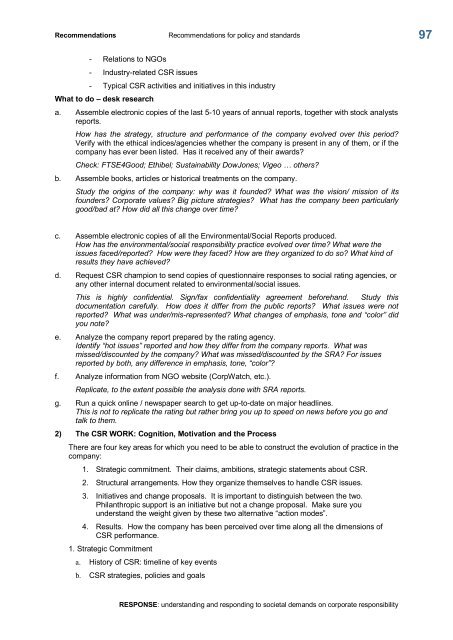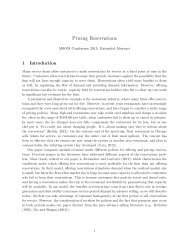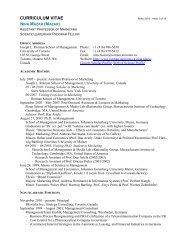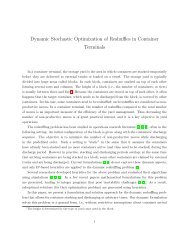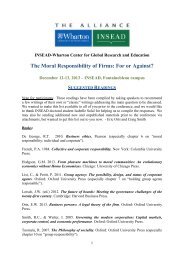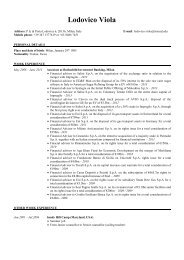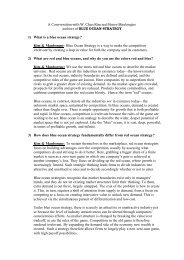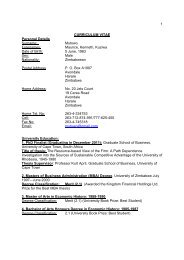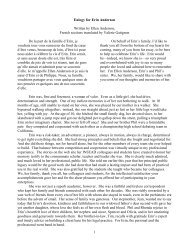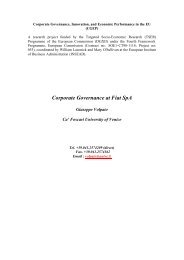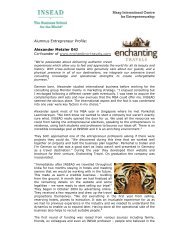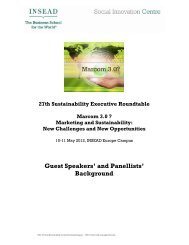RESPONSE - Insead
RESPONSE - Insead
RESPONSE - Insead
You also want an ePaper? Increase the reach of your titles
YUMPU automatically turns print PDFs into web optimized ePapers that Google loves.
Recommendations Recommendations for policy and standards<br />
Relations to NGOs<br />
Industryrelated CSR issues<br />
Typical CSR activities and initiatives in this industry<br />
What to do – desk research<br />
a. Assemble electronic copies of the last 510 years of annual reports, together with stock analysts<br />
reports.<br />
How has the strategy, structure and performance of the company evolved over this period?<br />
Verify with the ethical indices/agencies whether the company is present in any of them, or if the<br />
company has ever been listed. Has it received any of their awards?<br />
Check: FTSE4Good; Ethibel; Sustainability DowJones; Vigeo … others?<br />
b. Assemble books, articles or historical treatments on the company.<br />
Study the origins of the company: why was it founded? What was the vision/ mission of its<br />
founders? Corporate values? Big picture strategies? What has the company been particularly<br />
good/bad at? How did all this change over time?<br />
c. Assemble electronic copies of all the Environmental/Social Reports produced.<br />
How has the environmental/social responsibility practice evolved over time? What were the<br />
issues faced/reported? How were they faced? How are they organized to do so? What kind of<br />
results they have achieved?<br />
d. Request CSR champion to send copies of questionnaire responses to social rating agencies, or<br />
any other internal document related to environmental/social issues.<br />
This is highly confidential. Sign/fax confidentiality agreement beforehand. Study this<br />
documentation carefully. How does it differ from the public reports? What issues were not<br />
reported? What was under/misrepresented? What changes of emphasis, tone and “color” did<br />
you note?<br />
e. Analyze the company report prepared by the rating agency.<br />
Identify “hot issues” reported and how they differ from the company reports. What was<br />
missed/discounted by the company? What was missed/discounted by the SRA? For issues<br />
reported by both, any difference in emphasis, tone, “color”?<br />
f. Analyze information from NGO website (CorpWatch, etc.).<br />
Replicate, to the extent possible the analysis done with SRA reports.<br />
g. Run a quick online / newspaper search to get uptodate on major headlines.<br />
This is not to replicate the rating but rather bring you up to speed on news before you go and<br />
talk to them.<br />
2) The CSR WORK: Cognition, Motivation and the Process<br />
There are four key areas for which you need to be able to construct the evolution of practice in the<br />
company:<br />
1. Strategic commitment. Their claims, ambitions, strategic statements about CSR.<br />
2. Structural arrangements. How they organize themselves to handle CSR issues.<br />
3. Initiatives and change proposals. It is important to distinguish between the two.<br />
Philanthropic support is an initiative but not a change proposal. Make sure you<br />
understand the weight given by these two alternative “action modes”.<br />
4. Results. How the company has been perceived over time along all the dimensions of<br />
CSR performance.<br />
1. Strategic Commitment<br />
a. History of CSR: timeline of key events<br />
b. CSR strategies, policies and goals<br />
<strong>RESPONSE</strong>: understanding and responding to societal demands on corporate responsibility<br />
97


